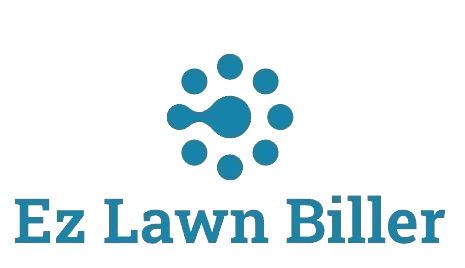Follow Up with Clients: Tips for Lawn Professionals
In the competitive lawn care industry, maintaining strong relationships with clients is crucial for sustained success. Following up with clients after services not only reinforces your professionalism but also lays the groundwork for long-term customer loyalty. In this blog post, we will explore effective strategies for lawn care professionals to enhance their client follow-up processes, leading to improved service satisfaction and business growth.
Effective communication is the backbone of any successful business. For lawn professionals, following up with clients can provide valuable insights into their satisfaction levels, showcase your commitment to service quality, and identify areas for improvement. This blog will delve into practical tips for efficient follow-ups, the importance of personalized communication, and how leveraging technology can streamline this essential process.
Understanding the Importance of Client Follow-Ups
Client follow-ups are more than just a courtesy; they are an integral part of customer service that can significantly impact your reputation. Studies show that businesses that engage with their clients post-service can increase customer retention by up to 30%. Regular follow-ups demonstrate that you care about your clients’ needs and are willing to go the extra mile to ensure their satisfaction.
Moreover, follow-ups provide an excellent opportunity to gather feedback. Client opinions can give you crucial insights into what aspects of your service are appreciated, and what areas may need adjustments. For example, if you receive consistent feedback about the timing of your mowing services, you can make necessary changes that align better with your clients’ schedules.
Crafting Personalized Follow-Up Messages
Personalization is key when reaching out to clients. A generic follow-up message can feel impersonal and might not resonate with your audience. Instead, try to reference specific details about the service you provided. For example, you might say, “Hi [Client Name], I hope you’re enjoying your newly manicured lawn! I wanted to check if everything meets your expectations.” This approach shows that you value their business and are attentive to their unique needs.
Consider implementing a system to track past services for each client, including notes on preferences or specific requests. This system allows you to tailor your follow-up communications effectively. For instance, you might ask how the recent fertilization treatment is affecting their lawn or if they noticed any improvement in growth. Such tailored messages not only enhance client engagement but also increase the likelihood of repeat business.
Utilizing Technology for Efficient Follow-Ups
In today’s fast-paced world, technology plays a significant role in streamlining communication. Lawn billing software, like [Lawn Biller Software](https://ezlawnbiller.com/), offers features that enable you to automate follow-up messaging. You can set reminders to reach out to clients a few days after service completion, ensuring that follow-ups are consistent and timely.
Moreover, many lawn service software options integrate client management features, allowing you to store important client information and service history conveniently. This data can help you make informed follow-ups that are relevant and useful. As a lawn care professional, consider investing in a robust lawn service app that enhances your operational efficiency and client interactions.
Best Practices for Client Follow-Up
When planning your follow-up strategy, consider these best practices to boost effectiveness:
- Timing is Key: Aim to follow up within 48 hours of service completion. This timing allows you to address any immediate concerns while the experience is still fresh in the client’s mind.
- Be Proactive: Don’t wait for clients to reach out to you. Regularly check in with clients, especially after significant services like landscaping or seasonal clean-ups.
- Ask for Feedback: Use follow-up messages to encourage feedback. Clients appreciate when you seek their opinions, and this can help you make informed improvements.
- Offer Additional Services: Follow-ups are an excellent opportunity to suggest relevant services based on client needs. For instance, if you just completed a mowing service, you could recommend aeration or fertilization for optimal lawn health.
Leveraging Social Media for Follow-Ups
Social media platforms are powerful tools for engaging with clients beyond traditional methods. After providing a service, consider sending a personalized message through social media channels where your clients are active. This approach can strengthen relationships and encourage clients to leave positive reviews, further enhancing your online presence.
Sharing quality content on your social media pages can also serve as a form of follow-up. Posting helpful tips about lawn care, seasonal advice, or showcasing your latest work can keep your brand top-of-mind for clients. Encouraging interactions through likes, shares, and comments can foster a sense of community and engagement that benefits your business.
Case Studies: Effective Follow-Up Strategies in Action
Examining the practices of successful lawn care companies can provide valuable insights. One notable example is a local landscaping firm that implemented a robust follow-up system using a client management program. This firm made it a practice to contact every client a week after service to ensure satisfaction. They reported a 25% increase in repeat business within a year.
Additionally, another company using a lawn service computer program began sending seasonal newsletters that included follow-up messages along with lawn care tips. This approach not only kept clients informed but also reminded them of additional services they might need, resulting in a significant uptick in service inquiries.
Creating a Follow-Up Schedule
To maintain consistency, developing a follow-up schedule can be immensely beneficial. Outline specific timelines for different services and create reminders in your scheduling software. For instance, after a mowing service, plan a follow-up within 48 hours, and after a more extensive landscaping project, consider a follow-up at the two-week mark.
This proactive approach helps ensure no client falls through the cracks and establishes your brand as reliable and attentive. Furthermore, maintaining a consistent follow-up routine can enhance your company’s reputation, as clients appreciate the extra effort you put into their satisfaction.
Encouraging Referrals Through Follow-Ups
One of the most effective ways to grow your lawn care business is through referrals. Clients who feel valued are more likely to recommend your services to their friends and family. Use your follow-up communications to ask satisfied clients for referrals. A simple request like, “If you enjoyed our service, we would greatly appreciate it if you could share your experience with others!” can go a long way.
You may also consider implementing a referral program that rewards clients for bringing in new business. Offering discounts or complimentary services for referred clients can motivate your existing clients to spread the word about your exceptional service.
Conclusion
In conclusion, following up with clients is a vital aspect of building a successful lawn care business. By prioritizing personalized communication, leveraging technology, and implementing best practices, you can enhance client satisfaction and retention.
Remember, your clients are the heart of your business, and their feedback can lead to continual improvement and growth. As you refine your follow-up strategies, consider integrating tools like [Lawn Biller Software](https://ezlawnbiller.com/) to streamline your processes and improve engagement.
Ultimately, the effort you put into client follow-ups can yield substantial rewards, including increased loyalty, referrals, and business expansion. Start today by evaluating your current follow-up practices and consider how you can implement these tips to foster long-lasting relationships with your clients.




